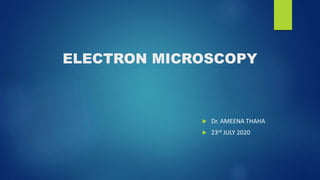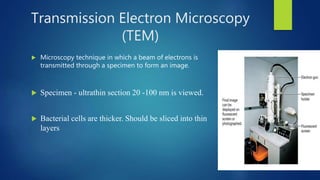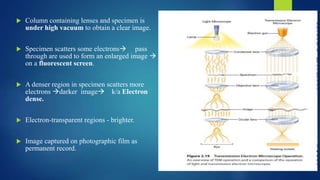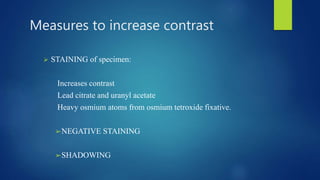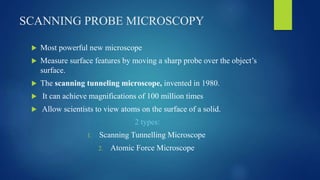This document provides information on electron microscopy. It discusses the history and invention of the electron microscope in the 1930s by Germans Ernst Ruska and Max Knoll. It describes two main types of electron microscopes - transmission electron microscopy (TEM) and scanning electron microscopy (SEM). TEM uses a beam of electrons to transmit through a thin specimen to form a magnified image, while SEM detects scattered electrons from a specimen's surface to produce 3D topological images. Specimen preparation and imaging principles are explained for both techniques. Other advanced microscopy methods like scanning probe microscopy are also briefly covered.
